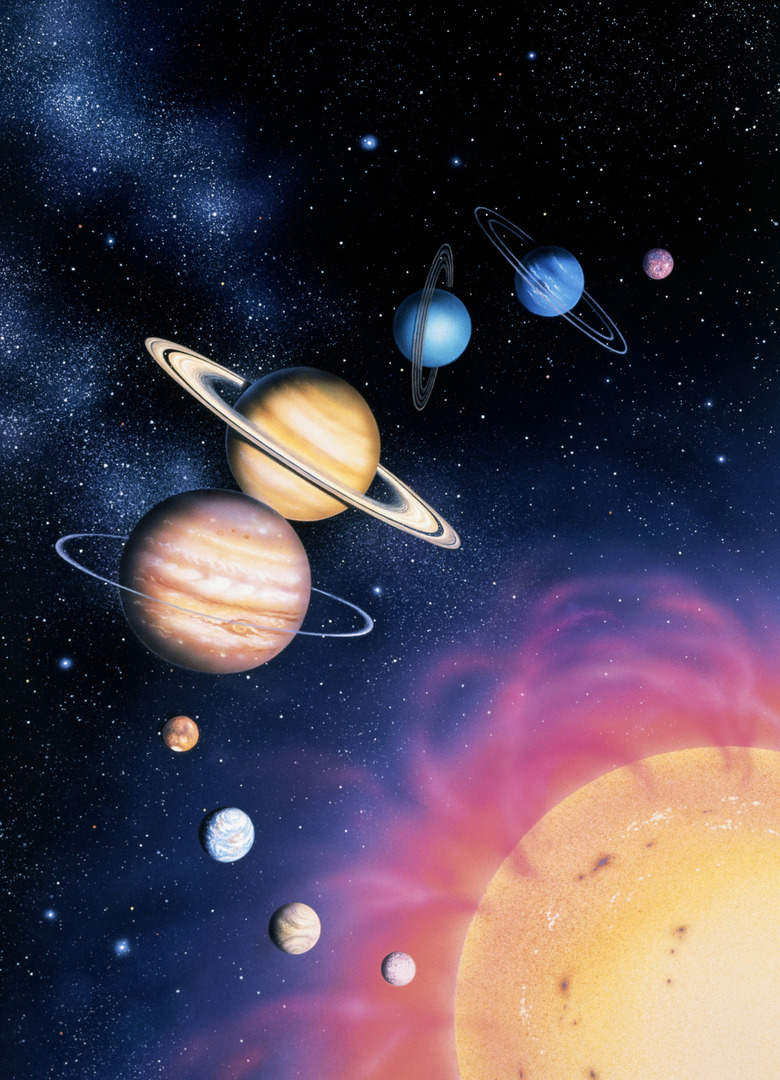The Climate On The Planet Mercury
Each of the eight planets in the solar system possess a distinct atmosphere and climate. Mercury, the closest planet to the sun, receives a constant stream of solar particles, which bombard its atmosphere, generating a tail similar to those found behind comets. The hellish climate on Mercury is dramatically different than that of Earth, gyrating from one extreme to the other between day and night.
Temperature
Temperature
Mercury's distance from the sun varies between 46.7 million kilometers (29 million miles) and 69.2 million kilometers (43 million miles) as it proceeds through its orbit. A single day on Mercury lasts approximately 4,222 hours (176 Earth days), and the temperature anywhere on the planet hinges on whether it's day or night. During the day the average temperature reaches 430 degrees Celsius (806 degrees Fahrenheit), hot enough to melt lead. During the night temperatures plunge to approximately minus 183 degrees Celsius (minus 297 degrees Fahrenheit), cold enough to liquefy oxygen.
Pressure
Pressure
On Earth, differences in atmospheric pressure drive the creation and movement of clouds. Mercury has a very thin atmosphere, mainly consisting of particles emitted by the sun (solar wind) and elements vaporized from the planet's surface. This insignificant atmosphere generates a pressure 515 billion times smaller than the pressure on Earth, eliminating the possibility of cloud formation.
Wind
Wind
Conventional wind is the movement of air due to differences in pressure in between two close regions upon a planet. Because Mercury only generates a tiny pressure, there is no conventional wind on the planet. Due to its close proximity to the sun, however, solar particles bombard the planet and may lead to tiny gas currents high in the planet's exterior, leading to a rudimentary wind at high altitudes. The wind blows away from the direction of the sun and generates a faint tail, similar to those found behind comets. Recent scientific studies by NASA have found the tail to be mainly composed of sodium.
Humidity and Rain
Humidity and Rain
Humidity is a measure of water vapor in a planet's atmosphere. Mercury has a small amount of water vapor in its upper atmosphere, but it does not result in any measurable humidity. The water vapor remains in the planet's upper atmosphere and so there is never any precipitation.
Cite This Article
MLA
Markings, Samuel. "The Climate On The Planet Mercury" sciencing.com, https://www.sciencing.com/climate-planet-mercury-3720/. 24 April 2017.
APA
Markings, Samuel. (2017, April 24). The Climate On The Planet Mercury. sciencing.com. Retrieved from https://www.sciencing.com/climate-planet-mercury-3720/
Chicago
Markings, Samuel. The Climate On The Planet Mercury last modified March 24, 2022. https://www.sciencing.com/climate-planet-mercury-3720/
